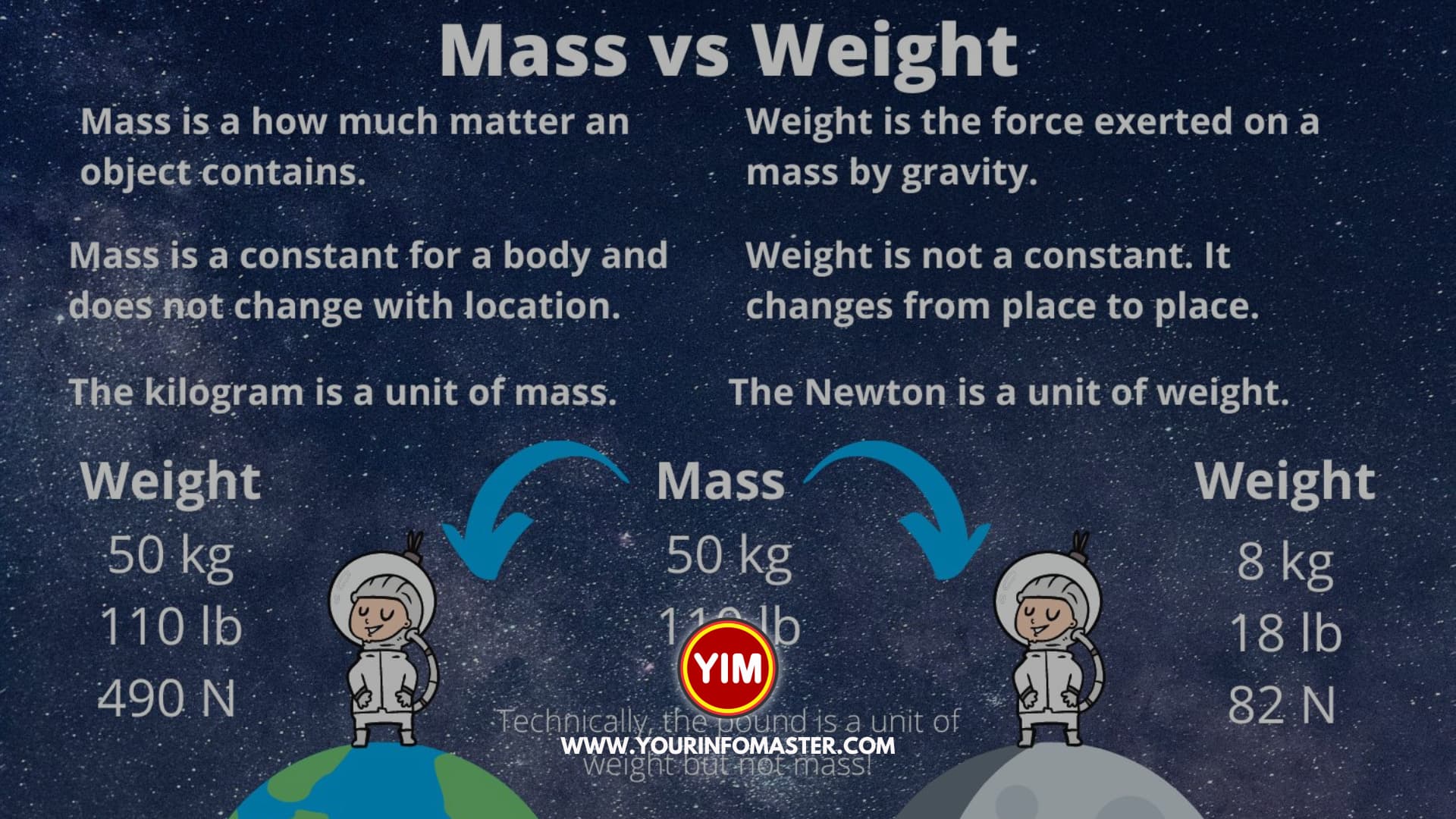What is the difference between mass and weight? This is a question that is often asked, and for good reason. While both terms are related to the properties of objects and their interactions with gravity, they are not interchangeable. In this blog post, we will explore the key differences between mass and weight and explain why it is important to understand them.
What is Mass?
Mass is a fundamental property of an object that quantifies the amount of matter it contains. It is a scalar quantity, meaning it has magnitude but no direction. The SI unit of mass is the kilogram (kg). Mass is a constant property of an object, meaning that it does not change regardless of its location in the universe or the force acting on it. This means that an object with a mass of 1 kg on Earth will have the same mass on the moon or any other planet.
What is Weight?
Weight is a measure of the force exerted on an object due to gravity. It is a vector quantity, meaning it has both magnitude and direction. The SI unit of weight is the newton (N). The weight of an object can change depending on the strength of the gravitational field it is in. For example, an object with a weight of 10 N on Earth will weigh less on the moon due to the moon’s weaker gravitational field.
10 Key factors: What is the difference between mass and weight?
10 Differences Between Mass and Weight:
- Definition: Mass is the amount of matter an object contains, while weight is the force exerted on an object due to gravity.
- Units: The SI unit of mass is the kilogram (kg), while the SI unit of weight is the newton (N).
- Constant vs. Variable: Mass is a constant property of an object and does not change, while weight can vary depending on the gravitational field an object is in.
- Measurement: Mass is measured using a balance or scale, while weight is measured using a spring scale or a balance with a weight set.
- Inertia: Mass is related to an object’s resistance to changes in motion (inertia), while weight is not.
- Location: Mass is independent of an object’s location, while weight depends on the object’s location and the strength of the gravitational field it is in.
- Formula: The formula for calculating mass is m = F/a, where m is mass, F is force, and a is acceleration. The formula for calculating weight is W = mg, where W is weight, m is mass, and g is the acceleration due to gravity.
- Significance: Mass is significant in terms of the amount of matter an object contains, while weight is significant in terms of the force an object experiences due to gravity.
- Role in Physics: Mass plays a crucial role in many areas of physics, including mechanics, thermodynamics, and relativity, while weight is primarily used in the context of gravitational fields.
- Importance: Understanding the difference between mass and weight is important because it affects how we measure and describe the physical properties of objects, and it can have practical applications in areas such as engineering, physics, and space exploration.
Why is it important to understand the difference between mass and weight?
Understanding the difference between mass and weight is essential for several reasons. First, it helps us accurately describe the physical properties of objects. For example, if we know an object’s mass, we can calculate its density and other important physical properties. If we only know the object’s weight, we cannot accurately determine its mass or other physical properties.
Second, understanding the difference between mass and weight is crucial in many areas of science and engineering. For example, in aerospace engineering, it is essential to know the mass of a spacecraft to calculate its fuel requirements and determine its trajectory. In physics, mass plays a fundamental role in many equations and theories, such as Newton’s second law of motion and Einstein’s theory of relativity. Without a clear understanding of mass, these fields would not be able to make accurate predictions or design effective solutions.
Third, the difference between mass and weight is important in everyday life. For example, if you want to lose weight, you need to focus on reducing your mass (i.e., the amount of fat and muscle in your body) rather than your weight. Similarly, if you are moving to a new location, you need to consider the difference in gravitational field strength to ensure that your weight-sensitive objects (e.g., scales) will still function accurately.
Conclusion
Overall, understanding the difference between mass and weight is critical for anyone interested in the physical world around us. It is a fundamental concept that is relevant to many areas of science, engineering, and everyday life. By knowing the differences between these two concepts, we can more accurately describe and understand the world we live in.







